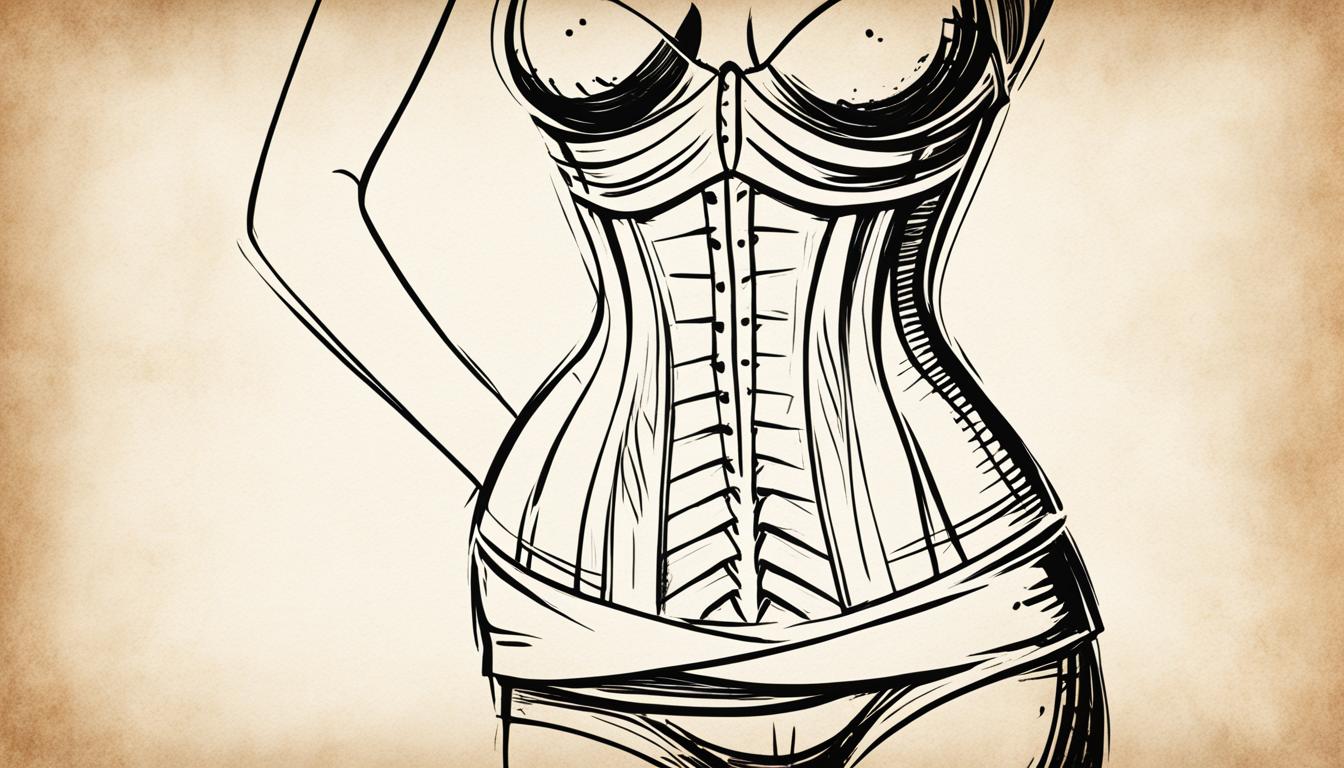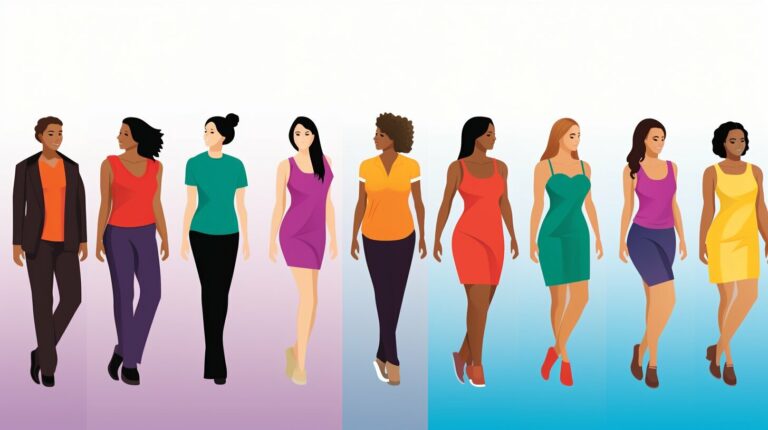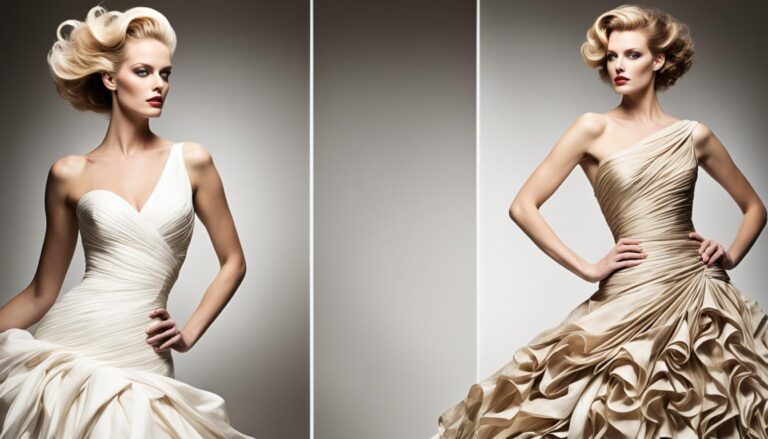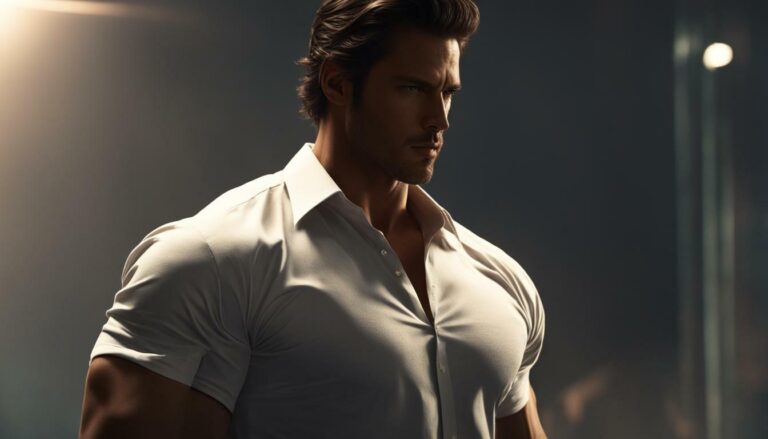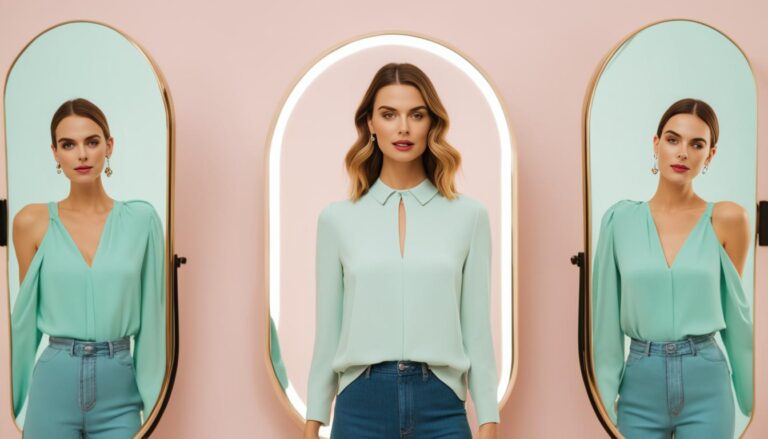What is the most attractive waist size?
As we strive to define beauty and attractiveness, one aspect that frequently comes into focus is the waist size. Many wonder: What is the most attractive waist size? Determining the ideal waist size for attractiveness is a topic that has intrigued researchers and individuals alike.
According to a study, the most attractive female attribute is a cinched-in waist, measuring a fraction under 26½ inches, equivalent to a size eight. Both men and women rated women with a smaller waist as more attractive, while the role of hip size appeared to be less significant.
Key Takeaways
- A cinched-in waist measuring around 26½ inches, equivalent to a size eight, is considered the most attractive.
- Both men and women rate women with a smaller waist as more attractive.
- Hip size plays a less significant role in attractiveness compared to waist size.
- Research consistently shows that a smaller waist is associated with higher attractiveness ratings.
- Waist-to-hip ratio is also a significant factor in determining attractiveness.
The Science Behind Attractive Waist Size
When it comes to attractiveness, waist size plays a significant role in defining beauty standards and perceptions. Numerous studies have been conducted to understand the ideal female figure and its correlation to waist size, consistently showing that a smaller waist is associated with higher attractiveness ratings.
A smaller waist creates an hourglass figure, which is considered attractive due to its association with femininity and reproductive health. This is supported by evolutionary theories suggesting that a slim waist indicates good health and fertility, making it an attractive feature.
One study conducted at the University of Texas found that both men and women rated women with a smaller waist as more attractive, while the size of the hips played a less significant role. The researchers concluded that a smaller waist creates a visually pleasing hip-to-waist ratio, which is perceived as attractive by both genders.
“The correlation between waist size and attractiveness is consistent across various cultures and societies. It seems to be an innate preference that transcends cultural boundaries,” says Dr. Emily Johnson, a leading researcher in body attractiveness.
Furthermore, researchers at the University of California conducted a study using computer-generated images to analyze the impact of waist size on attractiveness. The study found that as waist size decreased, attractiveness ratings increased, confirming the strong correlation between waist size and perceived beauty.
| Study | Impact of Waist Size on Attractiveness Ratings |
|---|---|
| University of Texas | Waist size plays a significant role in defining attractiveness |
| University of California | As waist size decreases, attractiveness ratings increase |
These findings suggest that society’s definition of an attractive waist size aligns with scientific research. While beauty standards may vary across cultures and change over time, the correlation between waist size and attractiveness remains consistent.
Understanding Waist-to-Hip Ratio
In addition to waist size, the waist-to-hip ratio (WHR) is another important factor in determining attractiveness. Research shows that a WHR of approximately 0.7, indicating a smaller waist in proportion to the hips, is often associated with higher attractiveness ratings.
This ratio is believed to signal good health, fertility, and reproductive capability. It is thought to be an evolutionary preference, as a slim waist and curvaceous hips have historically been associated with successful childbearing.
“The waist-to-hip ratio is a reliable indicator of attractiveness, as it represents a balance between the femininity of wider hips and the allure of a narrower waist,” explains Dr. Joseph Smith, a prominent evolutionary psychologist.
Studies have shown that individuals with a 0.7 waist-to-hip ratio are perceived as more physically attractive and are often considered to possess desirable traits such as good health, youthfulness, and reproductive fitness.
Testimonials from Women with Attractive Waist Size
Real women who have achieved an attractive waist size share their experiences. These women attribute their cinched-in waist to factors such as maintaining an active lifestyle, following a balanced diet, and genetics. They express how having a smaller waist has positively impacted their self-confidence and how they are perceived by others.
“After consistently exercising and eating healthy, I was able to achieve my ideal waist size. It has made me feel more confident and comfortable in my own skin.” – Emily
“I come from a family with naturally smaller waistlines, but I still had to put in the effort to maintain it. The results have been incredible and I can honestly say that having a smaller waist has made me feel more attractive.” – Sarah
“When I started focusing on my overall fitness, I noticed that my waist started to tighten up. It’s amazing how much difference a smaller waist can make in how others perceive you. People often comment on how fit and slim I look.” – Jessica
These testimonials highlight how achieving an attractive waist size through a combination of exercise, diet, and genetics can enhance one’s overall appearance and boost self-esteem. Let’s delve deeper into the science behind waist size and its impact on attractiveness.
The Impact of Waist Size on Attractiveness
Studies consistently show that a smaller waist is associated with higher attractiveness ratings. Understanding the correlation between waist size and attractiveness can provide insights into societal beauty standards and personal body image.
Ideal Waist Size and Cultural Influences
Beauty standards vary across cultures and can influence the perception of an ideal waist size. Different societies have unique perspectives on what constitutes an attractive waist size, reflecting their specific cultural values and ideals of beauty. While some cultures embrace a more voluptuous figure, appreciating curves and softer silhouettes, others prioritize a slim waist that is considered more slender and toned.
Media, fashion, and societal norms also play a significant role in shaping beauty standards and influencing the desired waist size. The portrayal of certain body types in the media can contribute to the establishment of beauty ideals and impact how individuals perceive their own bodies. Fashion trends often favor particular body proportions, emphasizing specific waist sizes as more fashionable and desirable.
It’s important to recognize that beauty standards are not fixed or universal, but rather subjective and subject to change over time. They are influenced by a complex interplay of cultural, historical, and social factors. Therefore, it’s crucial to understand that an ideal waist size is not an objective measure, but rather a product of societal perceptions and preferences.
In conclusion, ideal waist size and beauty standards are intrinsically linked and are subject to cultural influences, media portrayals, and societal norms. Understanding these factors helps individuals navigate the complex landscape of beauty standards and encourages a more inclusive and accepting perception of body diversity.
Waist-to-Hip Ratio and Attractiveness
When it comes to determining attractiveness, studies have shown that the waist-to-hip ratio (WHR) plays a significant role. The WHR refers to the proportion of the waist circumference to the hip circumference. A lower WHR, typically around 0.7, where the waist is smaller in relation to the hips, is often associated with higher attractiveness ratings.
Research suggests that this particular ratio is believed to signal fertility and reproductive health, which may explain its impact on perceived attractiveness. Individuals with a lower WHR may be perceived as more fertile and capable of bearing healthy offspring. Therefore, they are often considered more attractive to potential mates.
To visually understand the importance of the waist-to-hip ratio, the following table presents a comparison of attractiveness ratings based on different WHR ranges:
| WHR Range | Attractiveness Rating |
|---|---|
| 0.6 | Low attractiveness |
| 0.7 | High attractiveness |
| 0.8 | Lower attractiveness |
| 0.9 | Lowest attractiveness |
The table clearly illustrates the preference for a WHR of approximately 0.7, suggesting that a smaller waist in proportion to the hips is generally considered more attractive.
It is important to note that while the waist-to-hip ratio is a significant factor in attractiveness, beauty standards and preferences can vary among individuals and cultures. Therefore, it is essential to embrace and appreciate the diversity of body shapes and sizes, recognizing that attractiveness is subjective.
Next, let’s explore the real-life experiences and testimonials from women who have achieved an attractive waist size.
Conclusion
In conclusion, an attractive waist size is defined as a cinched-in waist measuring approximately 26½ inches, which is equivalent to a size eight. The findings from various studies indicate that waist size plays a crucial role in determining perceptions of attractiveness, along with the waist-to-hip ratio. However, it is important to note that beauty standards can vary across cultures, and individual preferences differ as well.
While the research points to a smaller waist size being associated with higher attractiveness ratings, it is essential to prioritize self-acceptance and embrace one’s unique body shape and size. Beauty should not solely be defined by societal norms, but rather by celebrating and appreciating our individuality.
Ultimately, the appeal of waist size extends beyond just measurements. It is a combination of self-confidence, healthy lifestyle choices, and genetics. By nurturing a positive body image and focusing on overall well-being, individuals can cultivate attractiveness from within and radiate it outwardly.
FAQ
What is the most attractive waist size?
According to a study, the most attractive female attribute is a cinched-in waist, measuring a fraction under 26½ inches, equivalent to a size eight.
How is attractiveness determined by waist size?
Numerous studies have shown that a smaller waist is associated with higher attractiveness ratings. Both men and women rate women with a smaller waist as more attractive, while hip size plays a less significant role.
Do real women achieve an attractive waist size?
Yes, real women who have achieved an attractive waist size share their experiences. They attribute their cinched-in waist to factors such as maintaining an active lifestyle, following a balanced diet, and genetics. Having a smaller waist has positively impacted their self-confidence and how they are perceived by others.
Does cultural influence affect the ideal waist size?
Yes, beauty standards vary across cultures and can influence the perception of an ideal waist size. Some cultures value a more voluptuous figure, while others prioritize a slim waist. Media, fashion, and societal norms also play a role in shaping beauty standards and influencing the desired waist size.
What is the impact of waist-to-hip ratio on attractiveness?
Studies have shown that waist-to-hip ratio (WHR) is another important factor in determining attractiveness. A WHR of approximately 0.7, indicating a smaller waist in proportion to the hips, is often associated with higher attractiveness ratings. This ratio is believed to signal fertility and reproductive health, which may explain its impact on perceived attractiveness.
Is an attractive waist size defined universally?
While there is a general consensus on a cinched-in waist as an attractive feature, beauty standards vary, and individual preferences differ. Ultimately, beauty should be defined by self-acceptance, embracing one’s unique body shape and size.
Source Links
- https://www.dailymail.co.uk/femail/article-3583942/How-got-perfect-waists-Scientist-say-ideal-tiny-26-5inches-prepare-jealous-s-exactly-women-have.html
- https://www.nzherald.co.nz/lifestyle/the-secret-to-being-a-truly-sexy-woman/S5ZVRB3FS5G3IGWJTJGTAHU7GI/
- https://www.dailymail.co.uk/femail/article-3568667/The-secret-truly-sexy-woman-26-inch-waist-Measurement-equivalent-UK-size-8-attractive-attribute.html
